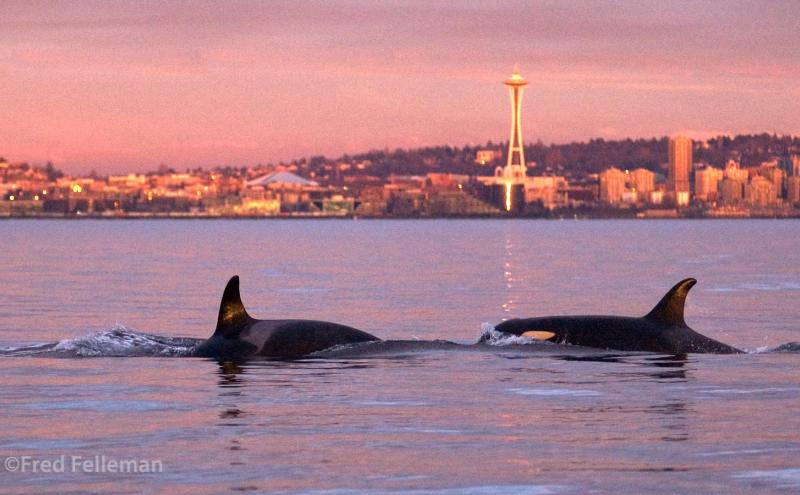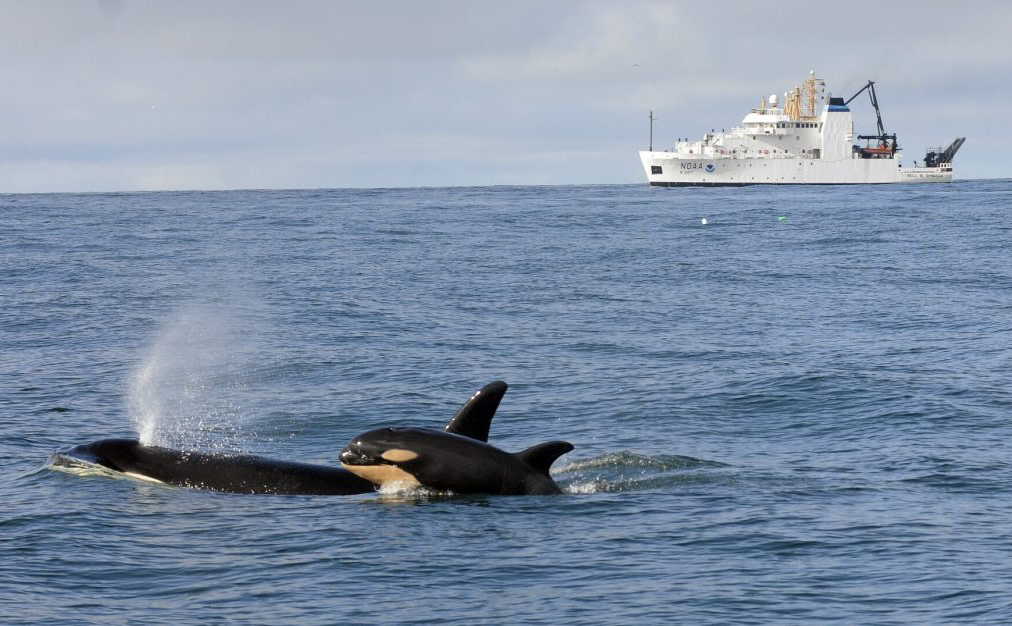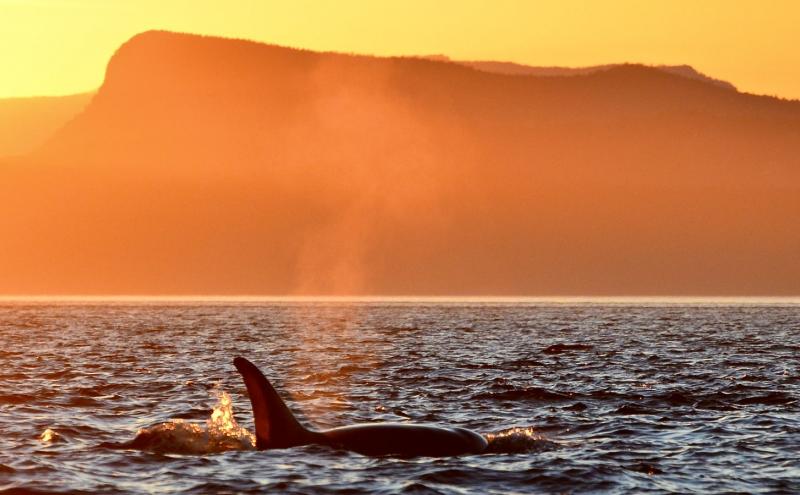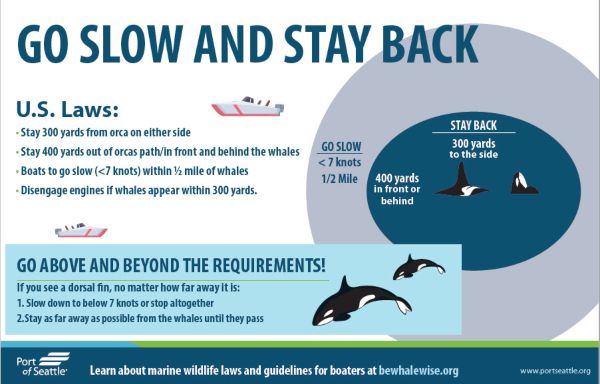
Collaboration Will Quiet the Sound
Collaboration Will Quiet the Sound
It’s no secret but the study of the southern resident orca community is why I first came to the Pacific Northwest in 1980 and continues to serve as a motivation for my public service. The fact that there are only 74 whales left in this population serves to sustain my efforts.
This is why I’m very proud of the Port having just received the Washington Public Ports Association Environmental Stewardship Award for a new initiative to reduce shipping noise, called Quiet Sound. This project, involving a broad range of stakeholders, was inspired by the Final Recommendations of Governor Inslee’s Southern Resident Orca Task Force that were published in November 2019.
I enjoyed working on the development of the recommendations with Port of Anacortes Commissioner, Kathy Pittis who represented the Washington Public Ports Association on the Task Force. In particular, Recommendation 22 calls for the identification of ways to reduce underwater noise from ferries and commercial vessels calling on Puget Sound Ports.
This undertaking draws heavily from the successful experience of the Vancouver Fraser Port Authority’s Enhancing Cetacean Habitat and Observation (ECHO) Program. The success of ECHO is reflected by the high degree of voluntary compliance among mariners to reduce speed of their vessels and other measures over the past several years to reduce ship-generated noise and whale strikes.
The Port of Seattle and the Northwest Seaport Alliance (the Alliance) wrote comment letters supporting the initiative and the Commissioners from Seattle, Tacoma, and the Alliance supported the inclusion of seed money to jumpstart the formation of the Program in their 2021 budgets.
To date, the Port of Seattle and the Northwest Seaport Alliance have been the primary coordinators of the many organizations behind this effort including the U.S. Coast Guard, Maritime Blue, Pacific Merchant Shipping Association, Marine Exchange of Puget Sound, Washington State Ferries, Puget Sound Partnership, NOAA, and the Makah Tribe. As a tribal liaison for the Port, I’m keenly aware of the need to engage many other tribal governments as this effort moves forward.
The public contributed insights to shape the program’s formation at an October 2019 Orca Workshop the Port and Alliance hosted. We reconvened the group this November to unveil the organizational structure for the Quiet Sound program that the planning team developed over the last two years. The initiative will be managed by Maritime Blue, a nonprofit organization initiated by Governor Inslee to advance maritime innovation, on whose board I serve.
I’ve been delighted by the level of collaboration between agencies and industry on this new initiative. My deep appreciation also goes to the many people and organizations (colleagues of mine) who have been tracking and studying the movements of our endangered orcas for decades. Identifying protocols and ways to provide credit for these contributions is not only appropriate but essential to helping assure these data, fundamental to the program’s success, are able to be shared.
These efforts began this Fall as the whales continue their annual passes through Puget Sound. It couldn’t be more-timely with the arrival of two new male calves J-57 and J-58 as well as our cautious optimism around J-46’s impending birth.
Ultimately the success of the Quiet Sound Program requires getting timely and reliable sighting information to the Puget Sound Pilots, ferry and tugboat captains, the Coast Guard and Marine Exchange if we are to broadly operationalize the recommendations of the program. I’m also committed to helping integrate a Quiet Sound-like program into the Coast Guard’s robust vessel traffic system (VTS). We are fortunate to have the only international VTS in the country and the Canadian Coast Guard has just established a “whale desk” in its operations center.
This ongoing collaboration and outreach to other partners will be essential and is supported by the entire Seattle Port Commission and the Alliance. Fostering collaboration between these efforts is the top priority for our work moving forward.
The Port of Seattle, Port of Tacoma, and Alliance seed money is also intended to be used to seek matching support from grants, state and federal governments, businesses as well as in-kind contributions. I’m particularly appreciative by provisions for funding such programs Senator Cantwell has included in the 2021 National Defense Authorization Act (NDAA) which the Congress just overrode a presidential veto to pass. I’m also encouraged by the enthusiasm expressed to me about this effort by State legislators to date. The State ferry system is the largest contributor of underwater ship noise, making it essential the State contribute to the program’s success.
In order for our region to remain economically and ecologically vibrant with healthy communities, economic diversity, and a high quality of life, requires us to nurture the balance between urban life and the abundant, but fragile environment that surrounds us.
This is something we can’t take for granted and requires sustained and innovative efforts.
Through the Quiet Sound Program, we are making progress toward protecting our iconic orca and other whale species while fostering sustainable jobs of the future. I look forward to the next phase of our work with Maritime Blue and all our partners that make this possible.
We’ve come a long way in two years, and I feel very optimistic about our future, but we can’t lose this momentum.
We need to keep our hands on the tiller as well as your continued engagement and support on behalf of Puget Sound and all those dependent on it.
Fred Felleman, Vice President, Port of Seattle Commission
Photo credit: Copyright Fred Felleman
See the original post Here.




